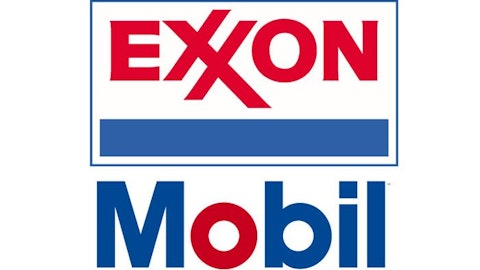Earlier this week, my Foolish colleague Tyler Crowe penned a smart piece about how “We Will Never See Cheap Oil Again.” Though I agree with many of the points Tyler makes, I disagree with his main thesis. It’s certainly possible for the bottom to fall out of the oil market, and history gives us some context for understanding this.

You can’t always get what you want
It’s true that the U.S., Russia, and Saudi Arabia all need high oil prices. As Tyler wrote, the advancements in U.S. drilling techniques mean that the cost of producing a barrel of oil necessitates selling it for a minimum of $55 to $80 per barrel, depending on where in the States it’s produced. Russia and Saudi Arabia both depend on revenue from oil production to fund their respective governments, with per-barrel prices ranging from $80 to $120, depending on whom you ask. As the top three producers in the world, the thinking goes, they will manipulate production to do what it takes to keep oil prices high.
The problem is that isn’t quite how it works. Russia, for one, has always been dependent on oil prices. In fact, it was the collapse of oil prices in the late ’80s that ended up being the straw that broke the USSR’s back. As Tyler Priest wrote in the Journal of American History last June:
The oil price collapse also played a lead role in ending the Cold War. It undermined the economy of the Soviet Union, which had quietly become the world’s largest oil producer, dependent on oil export revenues to pay for imported manufactured goods from the West and to support the economies of East European satellites. Plummeting crude prices cost the Soviet Union an alarming $20 billion per year, causing panic in the Politburo.
Right there you’ve got the world leader in oil production combined with the necessity of high oil prices, and all that comes of it is a price collapse — a collapse caused, I might add, by a surge in world production and OPEC’s inability to stick to its quota system. The price of oil was halved in one year, falling to $14 in 1986.
Needing high oil prices is one thing, but assuming that countries can cut production and prop up prices at will is quite another. The Financial Times‘ Nick Butler explained this from the view of Saudi Arabia’s current position earlier this week:
Saudi Arabia is the only country in the world with the ability to cut production and to keep prices up. … I expect the Saudis to pursue the tactic of making small incremental cuts in output in the hope that the market will stabilize. I doubt if this will work. Only a cut of 1.5m to 2m b/d will suffice to maintain prices and that would squeeze Saudi revenues too much. With growing domestic demand Saudi Arabia has little room for [maneuver]. As noted last week, the Saudis seem to be in process of losing control of the oil price.”
Essentially, though it may appear on the surface as if Saudi Arabia has control, it is between a rock and a hard place. Cutting oil production enough to make a difference hurts too much on the bottom line. Butler goes on to examine the impact of falling prices, noting that countries dependent on revenue will feel pain, but companies that need high oil prices to sustain expensive production techniques have more time to wait this out.
The bottom line
I’ve often said that trying to predict oil prices is a fool’s errand, but understanding who is affected by what happens when the price goes up or down, and how, is something that all oil and gas investors should know. What happens, for example, to a company like Exxon Mobil Corporation (NYSE:XOM) that’s investing $37 billion a year to find and produce all of this expensive oil? How will Valero Energy Corporation (NYSE:VLO) stock perform, given that the falling price of Brent means eroding margins for refiners? All things to consider instead of making assumptions about oil prices, given they have proved to be unpredictable and impossible to control.
The article Cheap Oil May Be Here Before You Know It originally appeared on Fool.com is written by Aimee Duffy.
Fool contributor Aimee Duffy has no position in any stocks mentioned. If you have the energy, follow her on Twitter, where she goes by @TMFDuffy. The Motley Fool has no position in any of the stocks mentioned.
Copyright © 1995 – 2013 The Motley Fool, LLC. All rights reserved. The Motley Fool has a disclosure policy.



